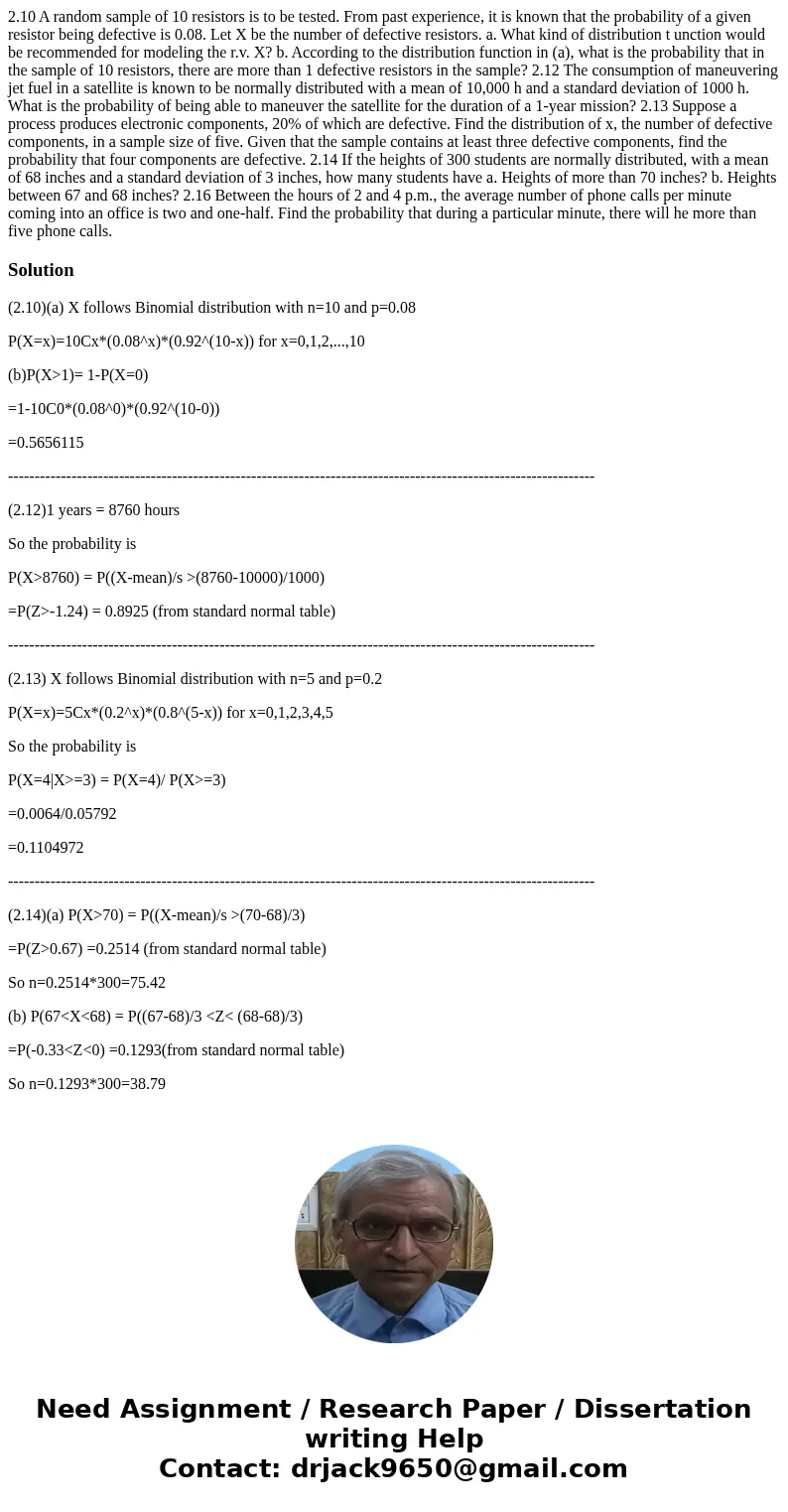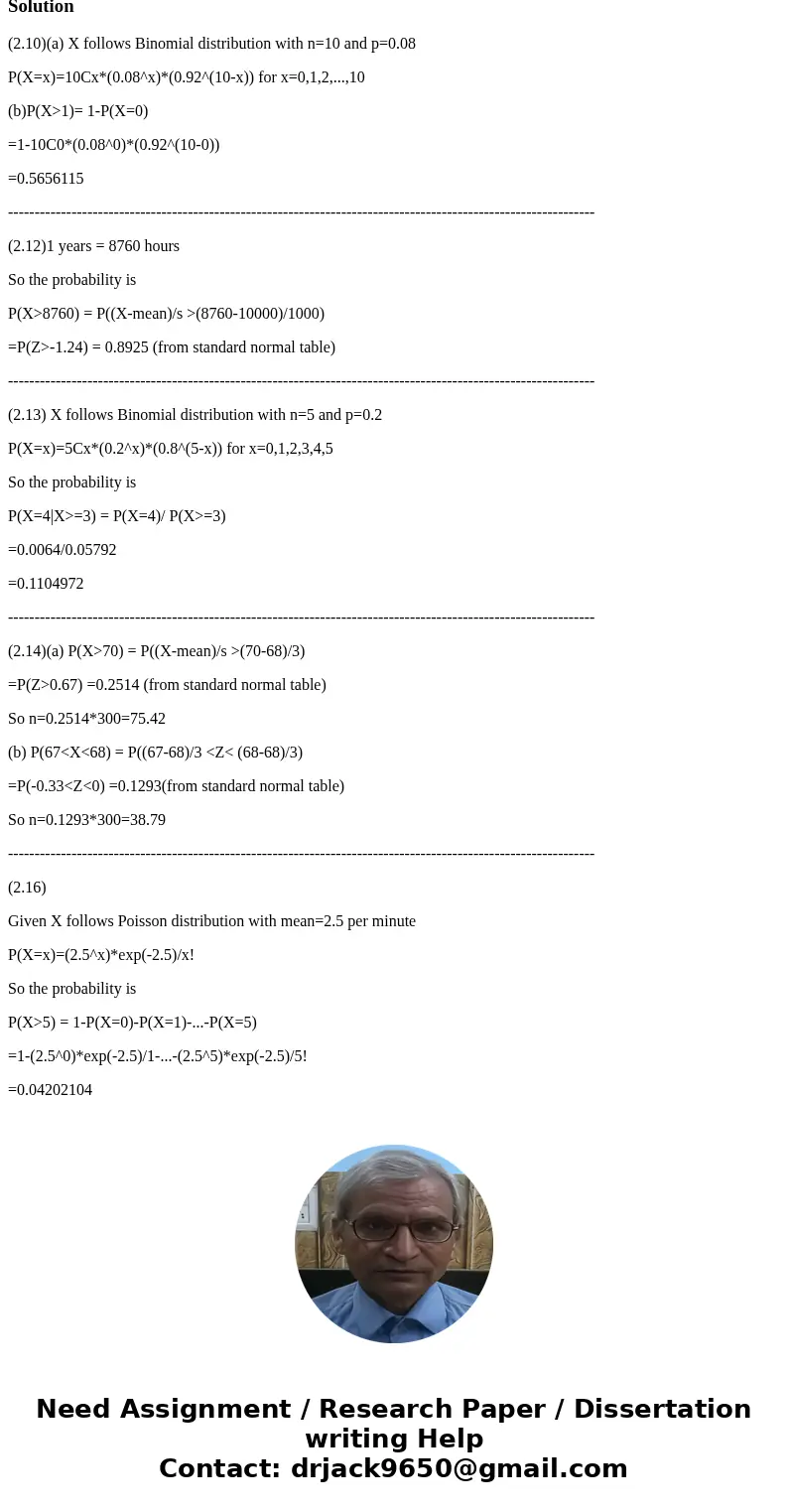210 A random sample of 10 resistors is to be tested From pas
Solution
(2.10)(a) X follows Binomial distribution with n=10 and p=0.08
P(X=x)=10Cx*(0.08^x)*(0.92^(10-x)) for x=0,1,2,...,10
(b)P(X>1)= 1-P(X=0)
=1-10C0*(0.08^0)*(0.92^(10-0))
=0.5656115
---------------------------------------------------------------------------------------------------------------
(2.12)1 years = 8760 hours
So the probability is
P(X>8760) = P((X-mean)/s >(8760-10000)/1000)
=P(Z>-1.24) = 0.8925 (from standard normal table)
---------------------------------------------------------------------------------------------------------------
(2.13) X follows Binomial distribution with n=5 and p=0.2
P(X=x)=5Cx*(0.2^x)*(0.8^(5-x)) for x=0,1,2,3,4,5
So the probability is
P(X=4|X>=3) = P(X=4)/ P(X>=3)
=0.0064/0.05792
=0.1104972
---------------------------------------------------------------------------------------------------------------
(2.14)(a) P(X>70) = P((X-mean)/s >(70-68)/3)
=P(Z>0.67) =0.2514 (from standard normal table)
So n=0.2514*300=75.42
(b) P(67<X<68) = P((67-68)/3 <Z< (68-68)/3)
=P(-0.33<Z<0) =0.1293(from standard normal table)
So n=0.1293*300=38.79
---------------------------------------------------------------------------------------------------------------
(2.16)
Given X follows Poisson distribution with mean=2.5 per minute
P(X=x)=(2.5^x)*exp(-2.5)/x!
So the probability is
P(X>5) = 1-P(X=0)-P(X=1)-...-P(X=5)
=1-(2.5^0)*exp(-2.5)/1-...-(2.5^5)*exp(-2.5)/5!
=0.04202104


 Homework Sourse
Homework Sourse